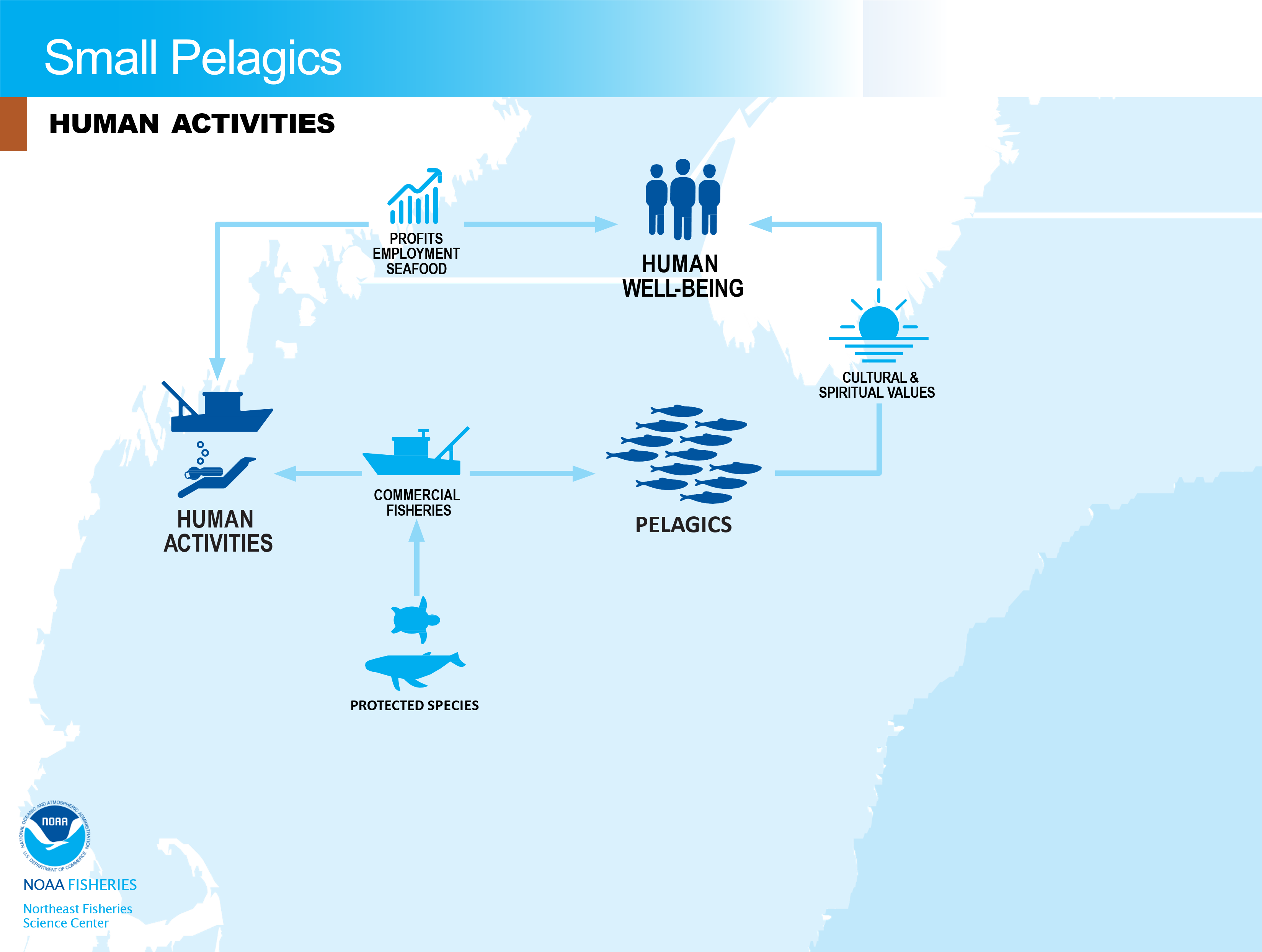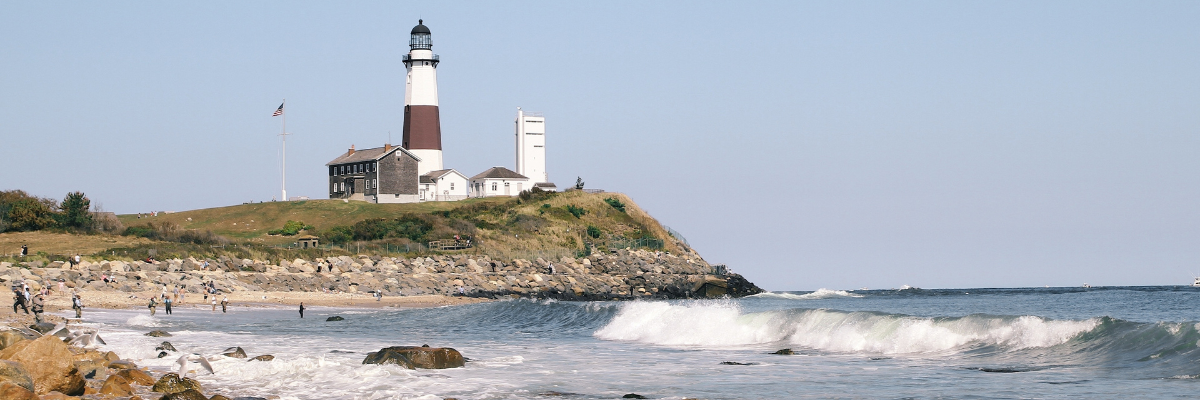Overview
Small-medium pelagic schooling fish and squid species are important to both fisheries and food webs. This group includes Atlantic herring, river herrings, Atlantic mackerel, butterfish, menhaden, and sandlance in the Northeast US. Forage fish in general can include any small pelagic plankton feeders, whether fished or unfished. Predation on forage fishes creates an important trophic link between the plankton and higher trophic levels. In the Northeast US, commercial fishing of all forage fishes combined contributes less to the removal of fish biomass than does natural predation on this category in aggregate. Regulating fishery catch for forage species is important to maintain both sustainable fisheries and predator populations. Commercial catches of Northeast US forage fish (Atlantic herring and mackerel) peaked in the 1970s, with lower catches since then, and surveys showing aggregate forage biomass increases from an early 1980s low.
- Gulf of Maine
Atlantic herring is the dominant harvested forage species in the Gulf of Maine (Overholtz & Link 2007, GOMC 2016). Herring fisheries supply bait for the Maine lobster fishery, which is a critical component of the state’s economy. NEFSC survey trawls in the spring and fall show increasing aggregate biomass of forage fish in both seasons since the 1970s. Over the past decade, the species contributing most to the total trawl survey sampled forage fish biomass in Gulf of Maine include Atlantic herring, alewife, and Atlantic mackerel.
- Georges Bank
The major harvested forage species on Georges Bank are Atlantic herring, longfin squid, Atlantic mackerel, and butterfish. Similar to the Gulf of Maine, aggregate forage species biomass in both the spring and fall on Georges Bank has increased since the 1970s. The mass spawning of Atlantic herring in the fall brings a biodiverse community of marine mammals to the Bank to feed, including fin, humpback, and sei whales among others (Wang et al. 2016).
- Mid-Atlantic Bight
Common forage fish species found offshore in the Mid-Atlantic Bight include the Atlantic herring, longfin squid, Atlantic mackerel and butterfish. Atlantic menhaden are more common further inshore with anchovies dominating in estuaries. Forage fish biomass in the region shows no long-term trends in the fall nor the spring seasonal trawl surveys.
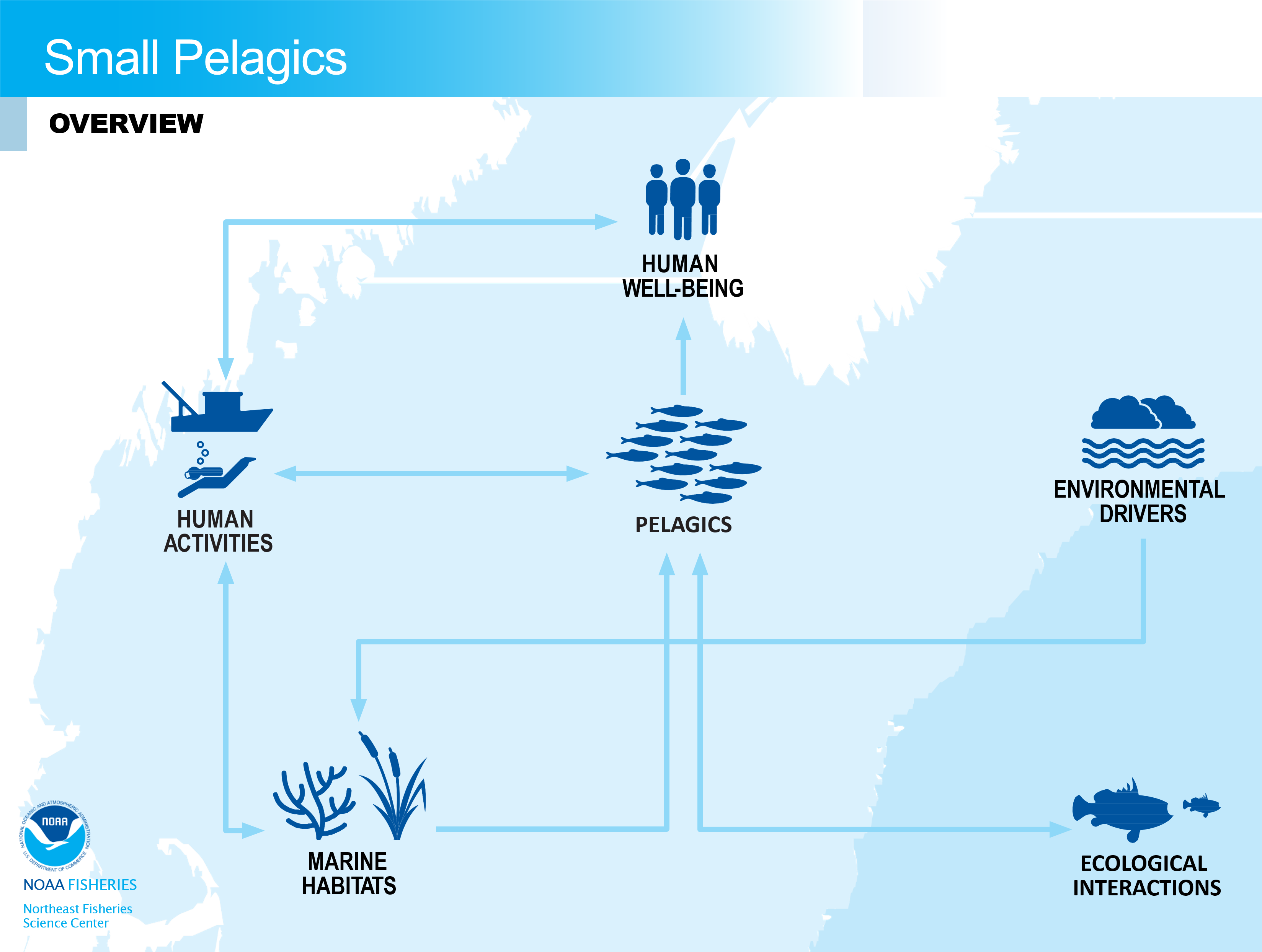
Ecological Interactions
Forage fish feed mainly on zooplankton, including copepods and other small invertebrates, as well as the egg and larval stages of other fish. Forage fish support many predators including commercial species (groundfish like cod, medium pelagics like striped bass, and large pelagics like tuna) and protected species (seabirds, seals, toothed whales, and some baleen whales). As a group, these predators are estimated to consume hundreds of thousands of tons of forage fish, although some predator species in the NW Atlantic are still considered data poor. While adult forage fish tend to occupy and rely on pelagic habitat, egg and juvenile stages of many species rely on demersal, nearshore, freshwater, or estuarine habitats as well.
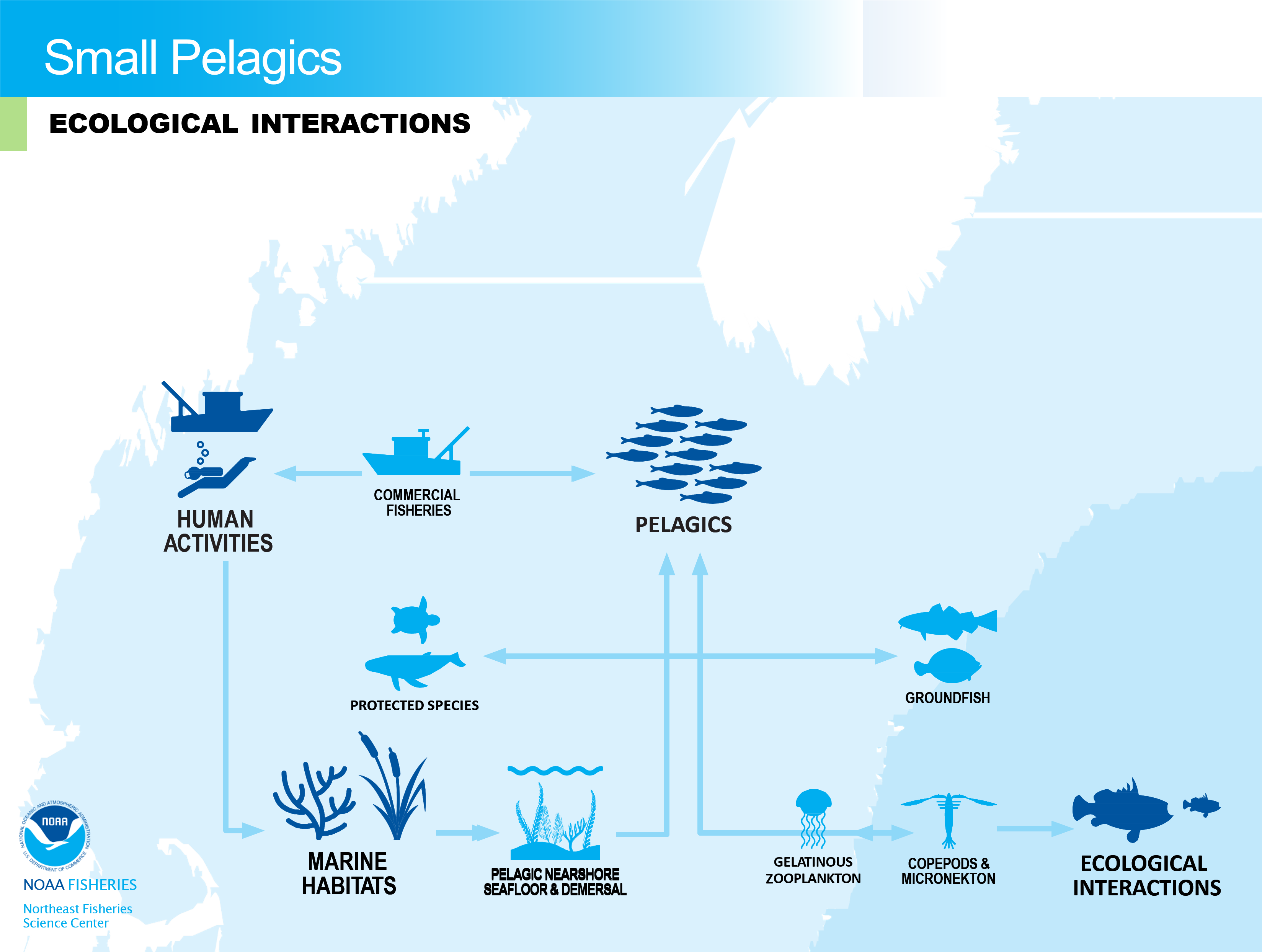
Environmental Drivers
Environmental drivers affecting pelagic habitats can influence forage fish distribution and productivity. Stratification and surface water temperature are important in shaping pelagic conditions across regions, and the cold pool also affects pelagic habitat in the Mid-Atlantic. Pelagic conditions in turn foster different levels of primary productivity, which alters zooplankton abundance, distribution, and community composition, potentially affecting forage fish growth and reproductive success.
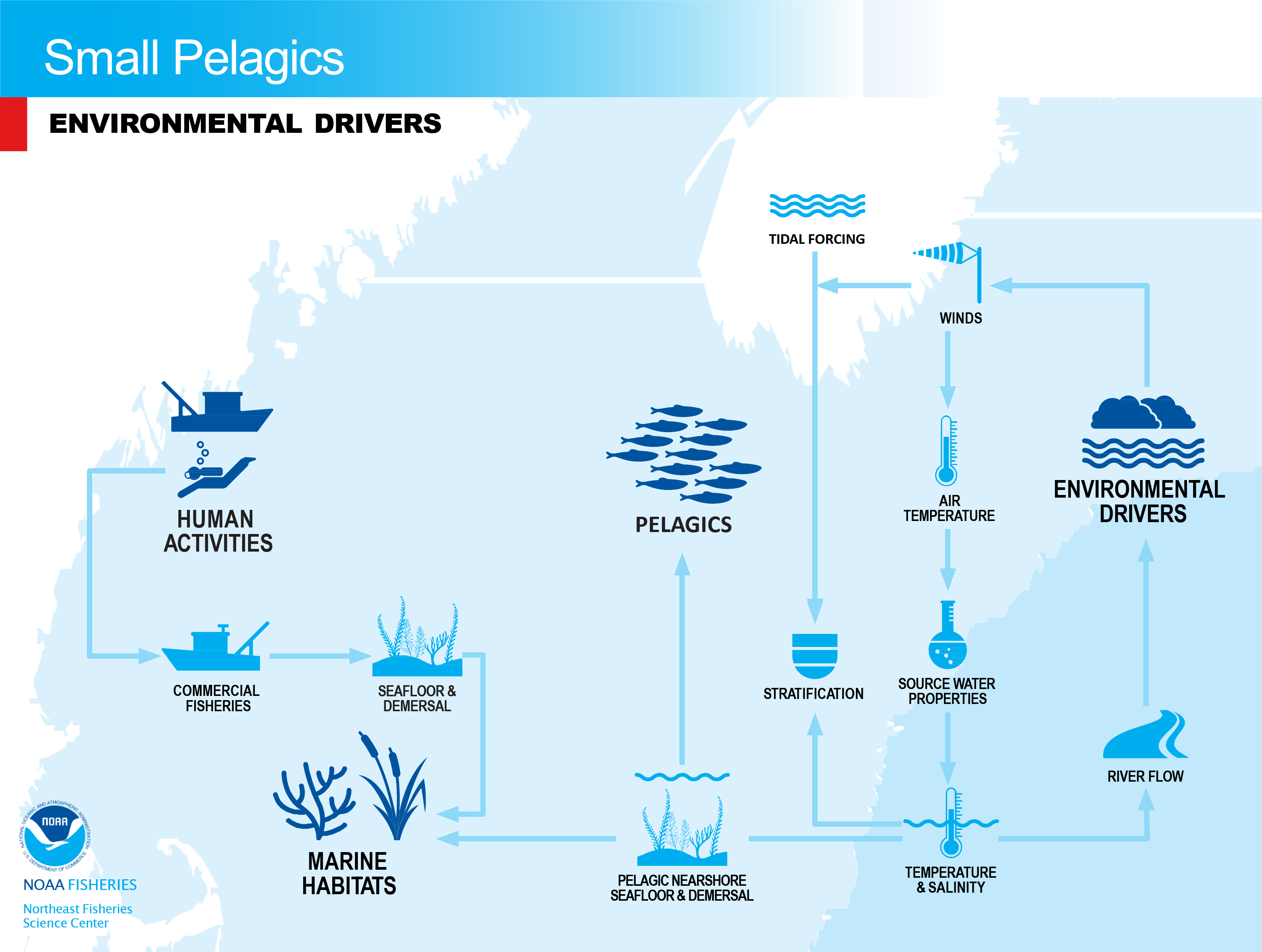
Human Activities
Forage fish directly and indirectly support commercial and recreational fisheries, as well as ecotourism businesses (bird and whale watching). Historically, Atlantic herring fisheries supplied coastal canneries making products for human consumption. Current herring fisheries supply bait for the economically important Maine lobster fishery, thus indirectly supporting seafood production as well. Atlantic mackerel are caught by recreational fishermen and used as bait to catch other recreational fisheries, while commercially caught mackerel supply international seafood markets. Non-commercial forage fish such as sandlance are locally abundant in the Northeast US, supporting reliable concentrations of marine mammals and other predators such as sportfish for ecotourism and recreational fishing. 